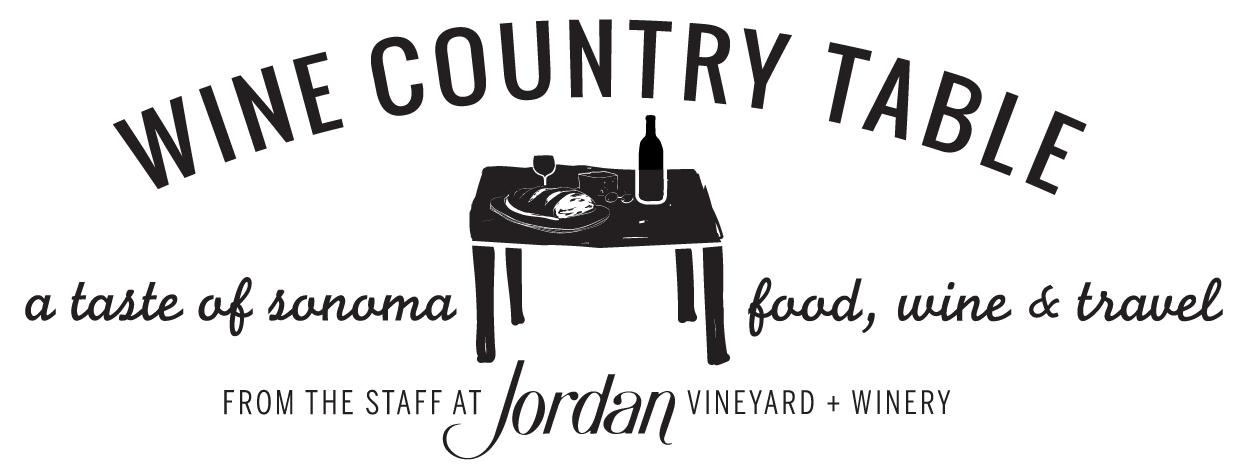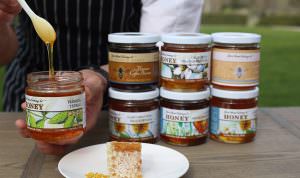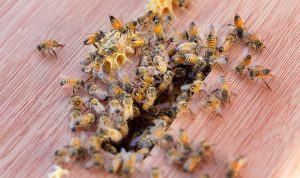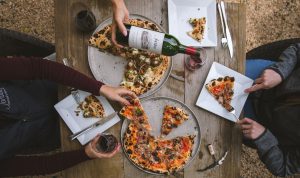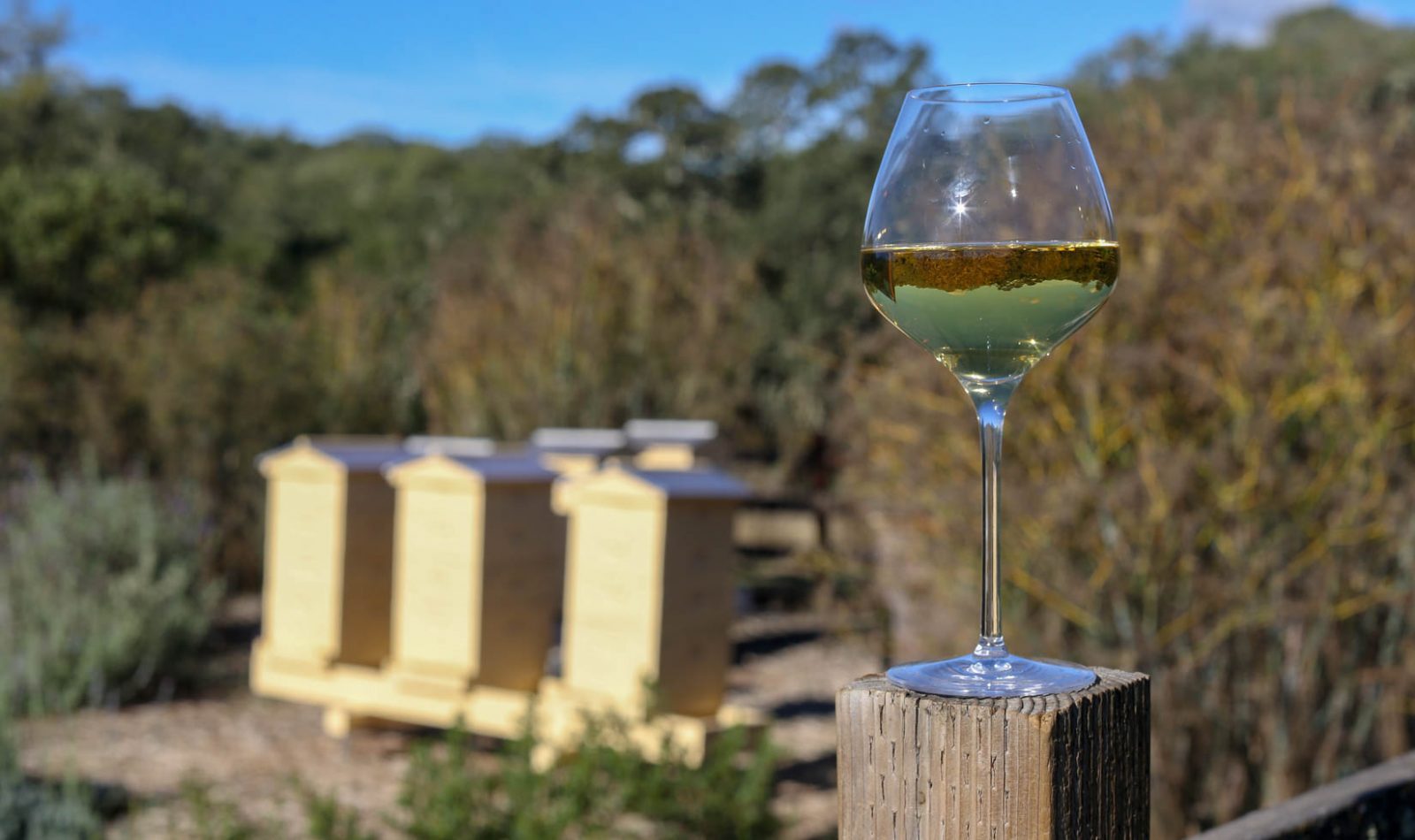
Napa and Sonoma Honey: Wineries that Also Make the Fruit of the Hive
Bees are a farmer’s best friend, pollinating plants that produce flowers and fruit. Although bees aren’t necessary to pollinate grapevines, they play a major role in the overall health of a sustainable winegrowing estate, and in the production of many of the foods and flavorings of Wine Country cuisine. It should come as no surprise that wineries are getting into the beekeeping business, making Napa and Sonoma honey to serve with their wines (some even sell jars in their tasting rooms).
Wineries employ their bees largely to pollinate cover crops in vineyards to add nutrients to the soil, and as protectors of beneficial insects, fighters against the bad bugs. Others with vegetable gardens rely on bees for helping them grow delicious food. Only a handful of wine producers take the extra step of producing Napa and Sonoma honey from their hives, and while volumes can be remarkably low, home-grown honey is yet another way to taste the terroir of an estate.
Here are ten wineries that view Napa and Sonoma honey production as, well, the bee’s knees.
Napa and Sonoma Honey: Wineries that Also Make the Fruit of the Hive
Sonoma County
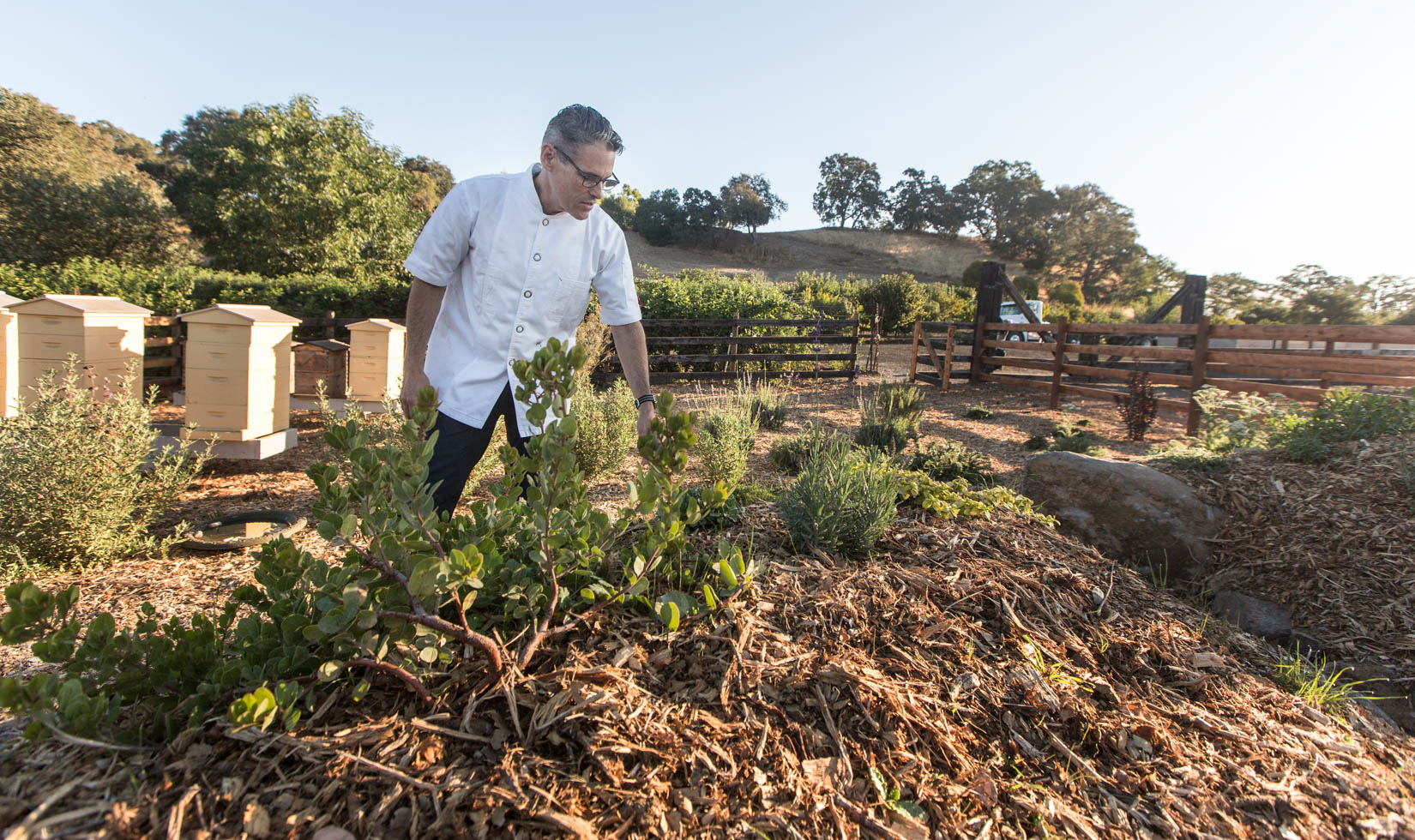
Jordan Vineyard & Winery
Honeybees have been vacationing at Jordan Winery in Healdsburg since the mid-1990s, when beekeepers began bringing hives to the sustainable vineyard for winter relaxation before going to the Central Valley to pollinate almond trees. Recently, winery chef Todd Knoll decided to make honeybees permanent residents and spent two years creating an experimental bee garden with native plants and two types of beehives: traditional langstroth hives and Flow Hives, the latter of which have been dubbed “honey on tap.” The Jordan apiary is located next to its organic garden, so the bees can pollinate fruits and vegetables, which are vital to the winery’s culinary program. Though Jordan doesn’t sell its Sonoma honey, guests get to enjoy it on outdoor tours and culinary events like dinner parties. The Estate Tour & Tasting and Vineyard Hike experiences let visitors taste the terroir through this golden nectar. Estate bee pollen is also served with membrillo on the Jordan cheese plate at winery dinners, Library Tastings, and the Winery Tour & Tasting. Jordan’s vineyard cover crops, which are mixed-floral food sources for the bees, actually produce very little harvestable honey. Most is consumed by the bees, and extract only the meager leftovers.
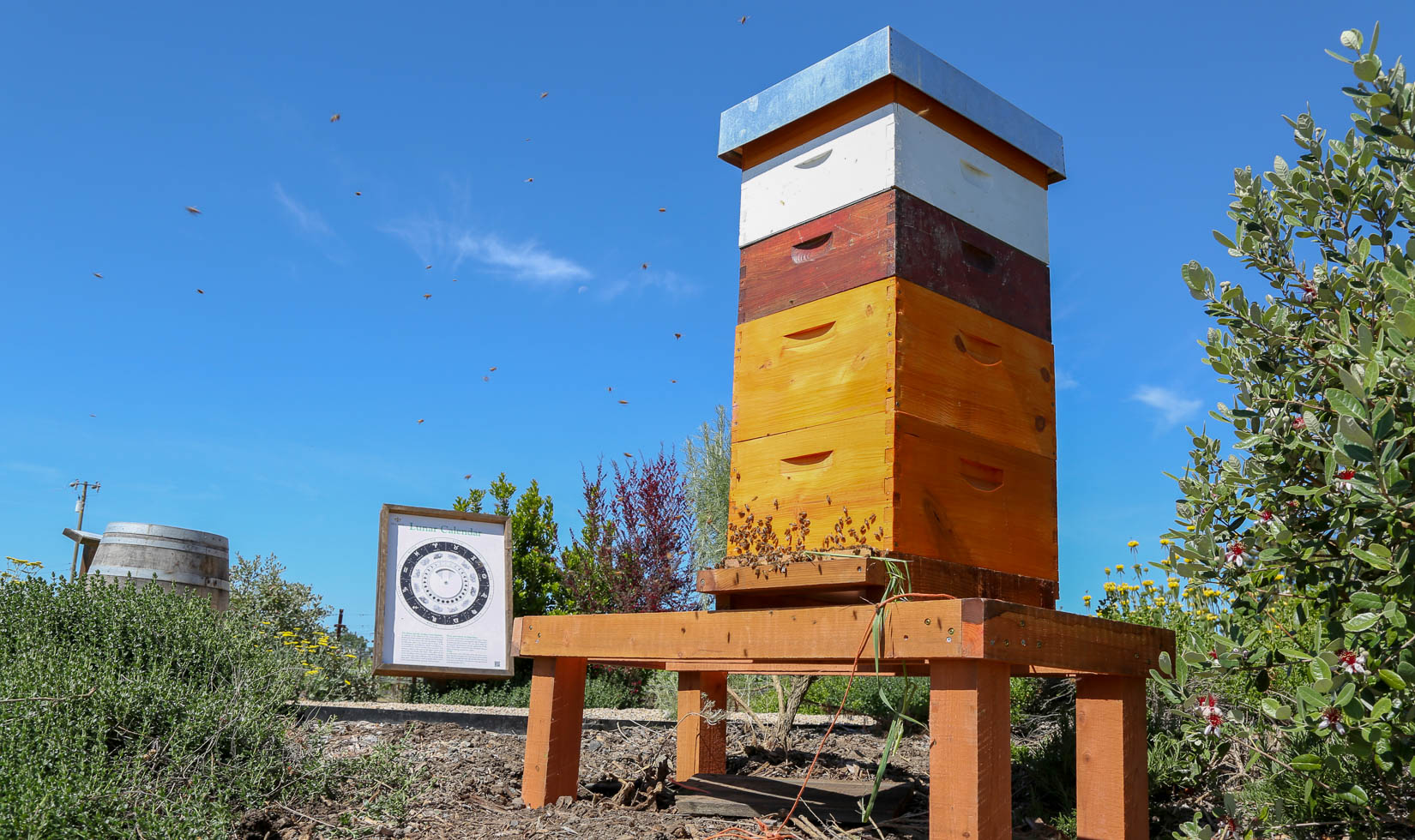
DeLoach Vineyards
Since purchasing DeLoach in 2004, Frenchman Jean-Charles Boisset and his family have invigorated the property with biodynamic and organic farming practices, and the production of non-wine products grown on the Russian River Valley estate. Sonoma honey is one of those foods, with DeLoach hives hosting bees that pollinate the insectary gardens on the property. The honey is used in the winery’s culinary programs, through Boisset’s Atelier Fine Foods & Catering division.
Belden Barns
The address may be Santa Rosa, but Lauren and Nate Belden’s winery, farmstead, and budding creamery and agricultural education center, sit at 1,000 feet, on the north-facing slope of Sonoma Mountain in Sonoma Valley, not far from Glen Ellen as the crow flies. It’s remote and an ideal place for bees to thrive. In cooperation with Beekind, the Beldens host hives and collect some of the honey. They don’t sell it yet, but use the golden nectar in recipes. Visits are strictly by appointment only.
Keller Estate
Ana Keller began placing hives on her family’s Petaluma Gap wine estate five years ago and the count is now at eight. The honey is harvested once a year, in October, at a family oriented event. In 2018, honey spinning was part of a fundraiser for Planet Bee Foundation’s educational programs. Keller sells its honey every year, when supplies allow.
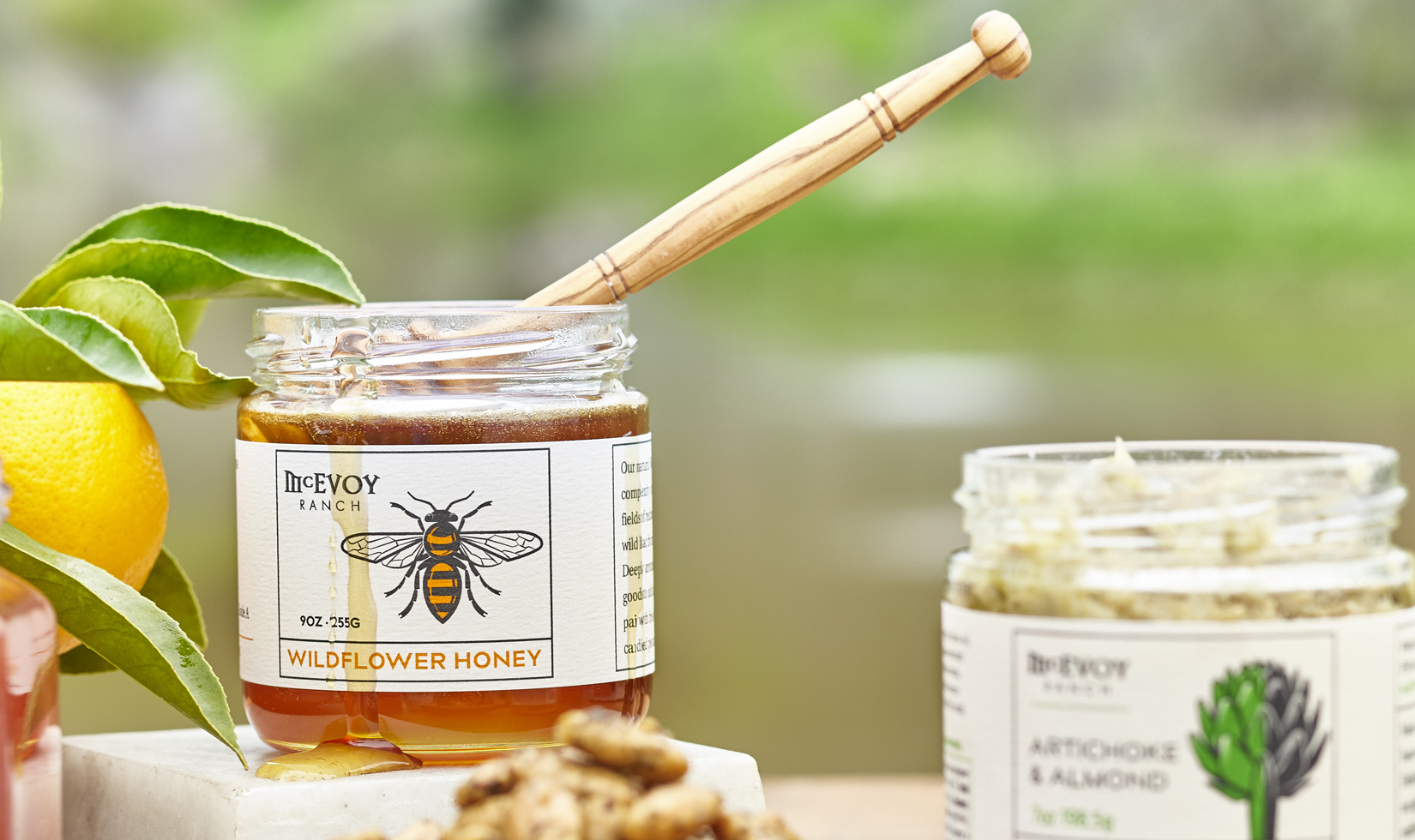
McEvoy Ranch
This southern Petaluma agricultural haven was established by San Francisco newspaper reporter and publisher Nan Tucker McEvoy (her grandfather, Michael De Young, founded the San Francisco Chronicle in 1865). Before her 2015 death, McEvoy created a diverse ranch, which includes olive trees, olive oil production, winemaking, walking tours and tastings of estate wines and culinary goods. McEvoy sells its own wildflower honey, from hives in the Capay Valley, east of Napa. Reservations are a must to visit, and there are several culinary experiences and walking tours from which to choose.
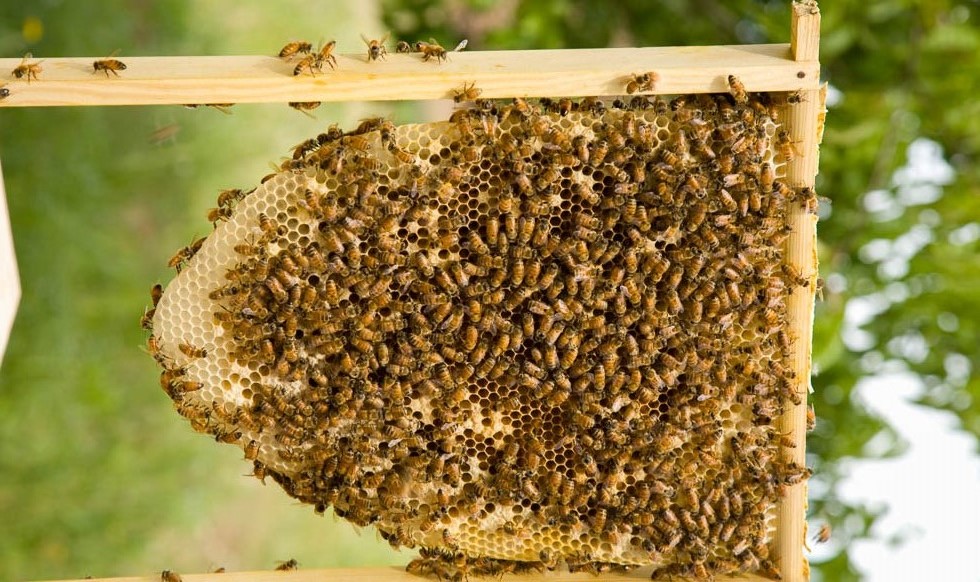
Quivira Vineyards
This Dry Creek Valley winery has kept bee hives in its garden for years, to encourage pollination of produce such as tomatoes, melons and squash. Hives are also located near the goat pen and under the fig tree in Quivira’s estate sauvignon blanc vineyard. The hives are biodynamic and replicate a bee’s natural environment, encouraging the comb to be created as it would be in the wild. The Sonoma honey is used in winery dinners and sold in the tasting room.
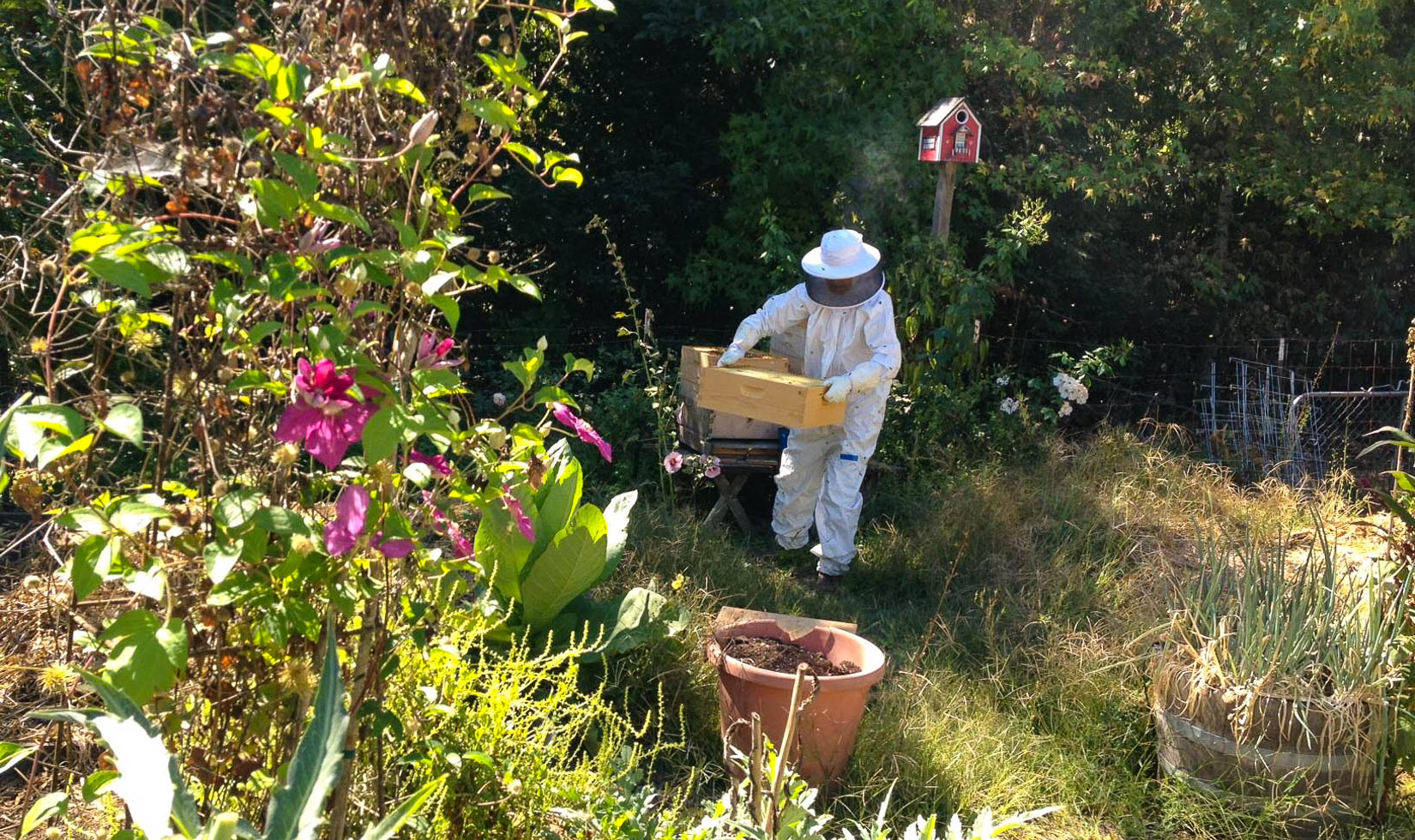
Trombetta Family Wines
Rickey Trombetta Stancliff, her husband, Roger Stancliff, and their winemaker daughter, Erica Stancliff, produce outstanding chardonnays and pinot noirs from their home vineyard in Forestville, plus sites elsewhere in Russian River Valley, Sonoma Mountain and the Petaluma Gap. They make a tiny amount of Sonoma honey from their home hive, and while they have no tasting room, private visits can be arranged and there just might be a drizzle of honey on the cheeses and bacon-wrapped figs they often serve guests.
Napa Valley
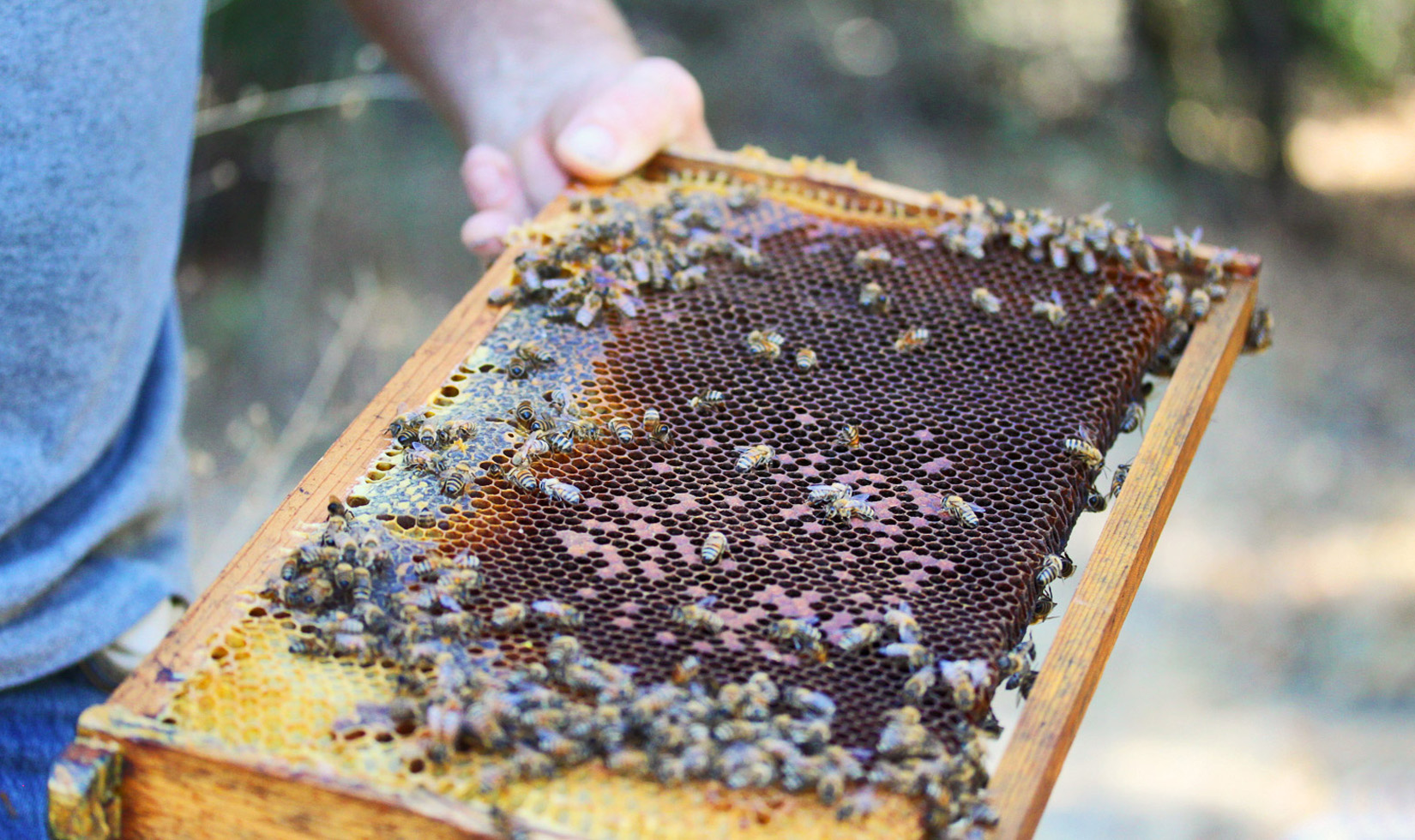
Fantesca Estate & Winery
Proprietors Susan and Duane Hoff and their winemaker, Heidi P. Barrett, make 3,000 cases of wine a year at their Spring Mountain winery. Honey is also on their menu, with a hive located near their cabernet sauvignon vineyard (the queen was hatched at nearby Long Meadow Ranch). Napa Valley Bee Co. manages the Fantesca colony, which produces a honey that’s rich and dark.
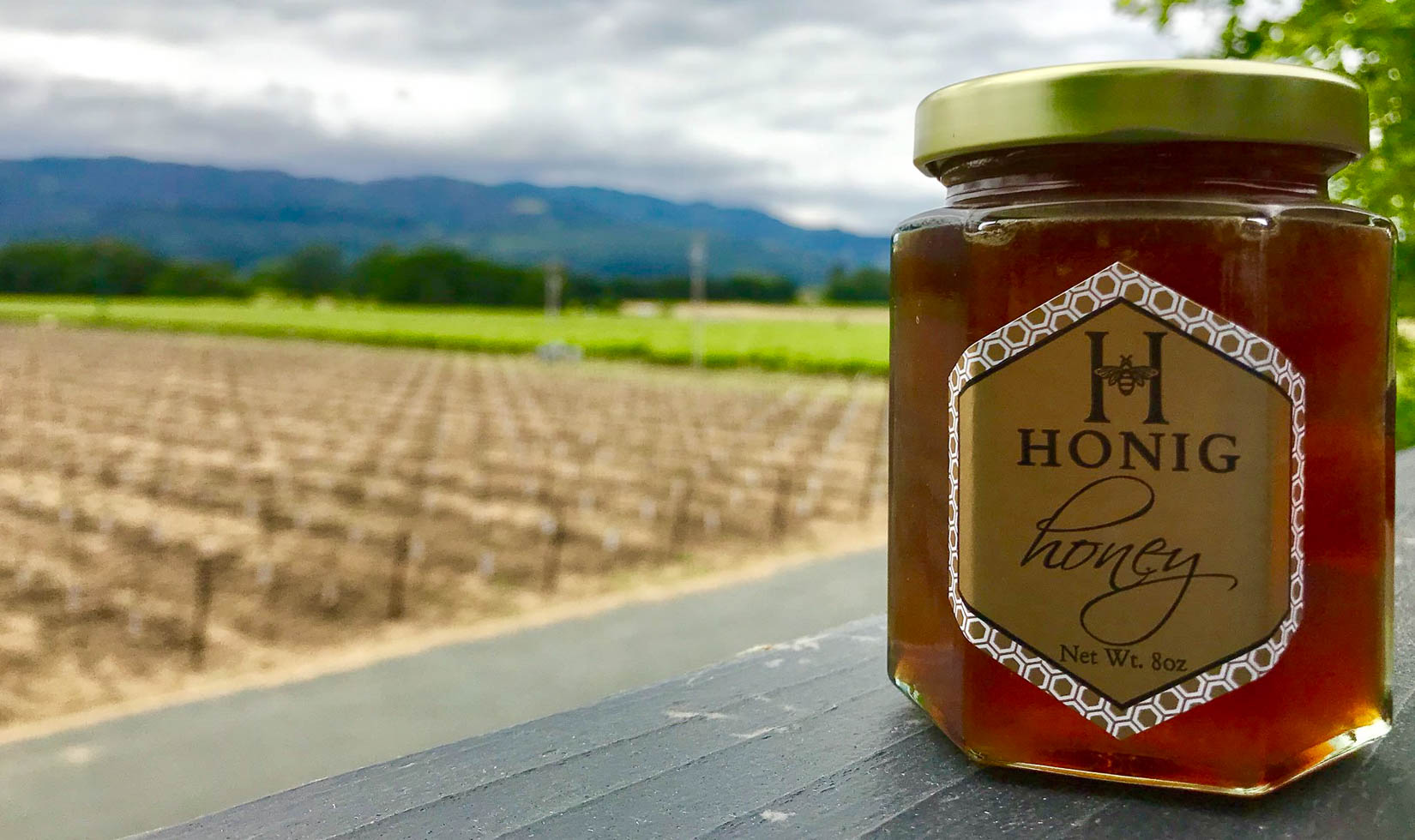
Honig Vineyard & Winery
It doesn’t get more authentic in beekeeping than at Honig: Its name is the German word for honey. Honig’s hives are located along the Napa River, where the bees get fresh water and forage for pollen along the banks. They also feast on the cover crops in the vineyards and gardens. Honig’s beekeeper can extract as many as 100 pounds of Napa honey per hive, per year, depending on conditions. A limited amount of the estate honey is sold in the tasting room.
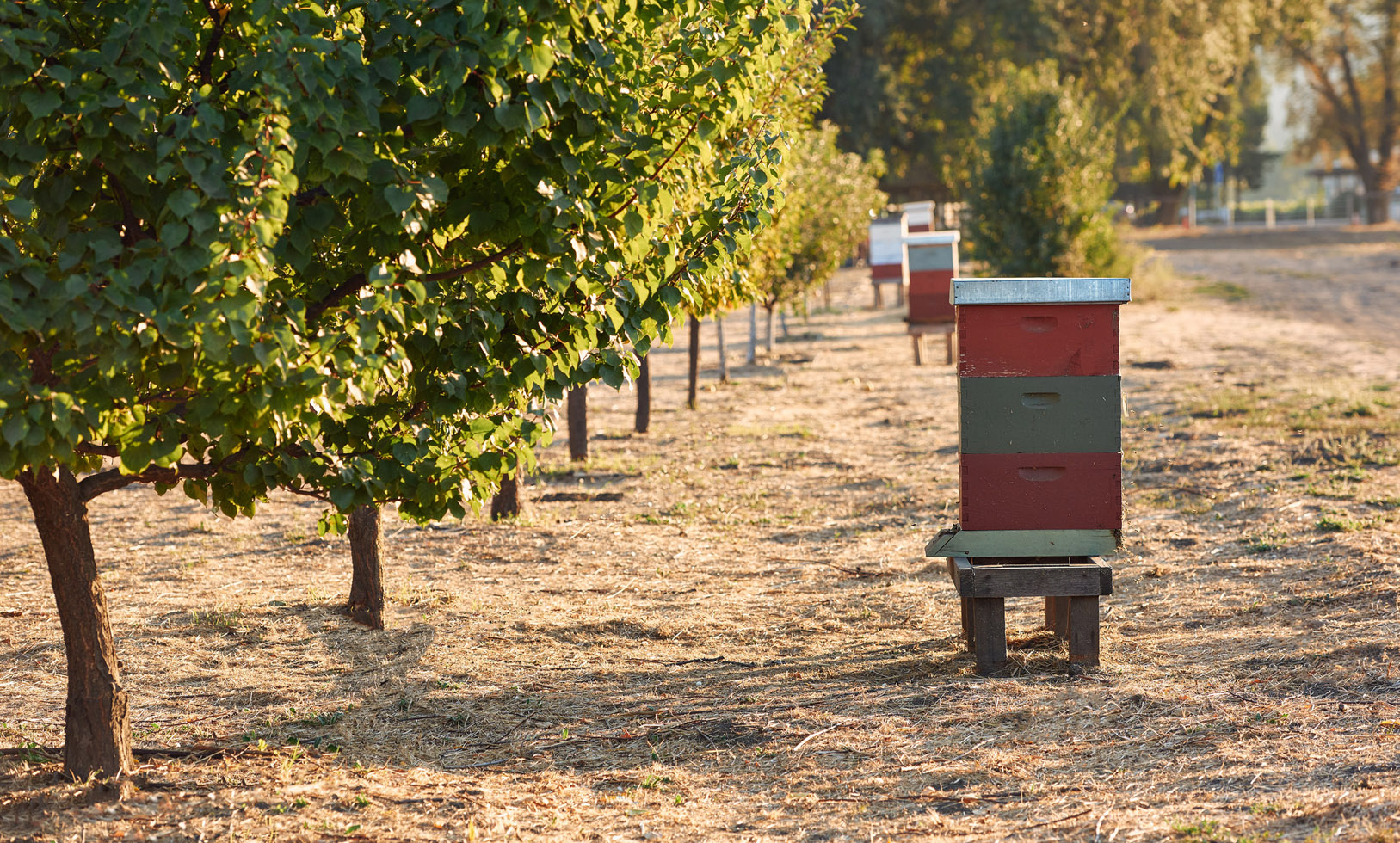
Long Meadow Ranch
Honeybees are a key part of Long Meadow’s sustainable farming regime. The colony pollinates the estate’s fruit trees and vegetable gardens, and produces honey for the Hall family’s Farmstead restaurant in St. Helena and Estate Chef’s Table experience at the nearby winery. The Halls have more than 2,000 acres of organically grown grapes, olive trees, fruits, vegetables and livestock pastures across three counties—a program they call “full circle farming.” During bountiful years, they bottle their Napa honey to sell in their historic farmhouse tasting room in St. Helena, located next to their restaurant.
Next time you’re pouring a glass of wine to serve with your dinner, raise a toast to the bees. Without bee pollination, there would be no tomatoes, squash, citrus, stone fruit, apples, berries, nuts, mustard seeds … the list goes on. We can also thank bees for those vibrant purple, pink and yellow edible flowers in our salads, and most obviously, the honey they produce and which accents so many recipes, salad dressings, cheese plates, coffee and tea.
